
SHAH ALAM: More on the LMS, Part 2. It appears that the negotiations for the LMS is going well and its expected that the contract (or Letter of Award, the official term) could be signed at the next LIMA in Langkawi this March. The LOI for the project was awarded to Boustead Naval Shipyard last November.
RMN Chief Admiral Ahmad Kamarulzaman Badaruddin said this to Malaysian Defence yesterday in Kuantan when asked about the progress of the program. He said they were still negotiating over some equipment offered by China for the ship. He did not specify the items.
He confirmed that the LMS will be fitted with guns only, 30mm auto-cannons to be exact. “The guns are much better than our old Bofors guns, these can fire in all weather and night ” he said nodding in agreement when I said “the old Spray and Pray” in reference to the Bofors.
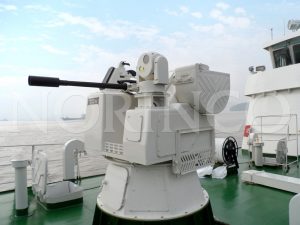
More importantly he said the ammunition for the China-made 30mm guns are “cheap”. He did not identify the guns however but it is likely that it will be either the H/PJ14(CS/AN2) or H/PJ17 both manufactured by China’s firm Norinco.
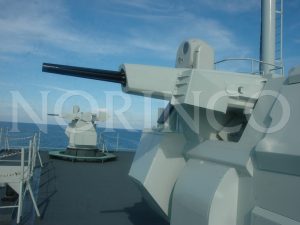
These guns – similar to the Aselsan SMASH 30mm (contracted for MMEA’s NGPC) and DSi 30mm (LCS) – are chambered for the 30 X 173mm long, the same ammo for the Denel cannon on the Gempita and for the cannon fitted on the USAF A-10 Warthogs (not the DU ones of course) as well as the SMASH and DSI guns.
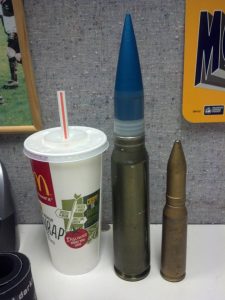
Hopefully, the 30mm guns will be the secondary armament for the LMS as the main gun shown in the CGI of the ship released by RMN previously showed that it was a 76mm gun, most likely the PJ26 type 76mm naval gun.
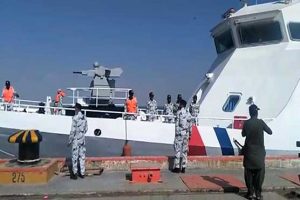
The Durjoy class LPCs- from which the LMS is derived – operated by the Bangladesh Navy have two secondary guns, most likely 30mm guns, mounted port and starboard on the aft deck.
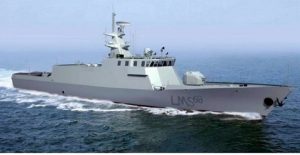
It will be weird to say the least if the LMS – a bigger variant of the Durjoy-class – has a smaller main gun.
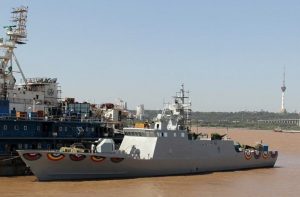
By the way, our latest ship, KM Pekan will be among the first ship to carry the title “Malaysia Coast Guard” when it arrived in March, for LIMA 2017. I was told that the APMM/MMEA title will no longer be applied to the agency’s assets (aircraft and ships) as the designations were confusing to un-trained observers.
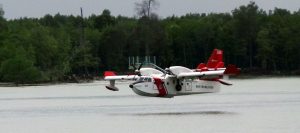
However, the Agensi Penguatkuasaan Maritim Malaysia will still be used as the agency’s official name as it is the name specified under the 2004 Act approved by Parliament.
* this post was updated to add the pictures of PMSA Hingol and the 30 X 173mm round.
— Malaysian Defence
If you like this post, buy me an espresso. Paypal Payment

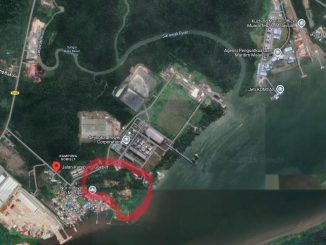
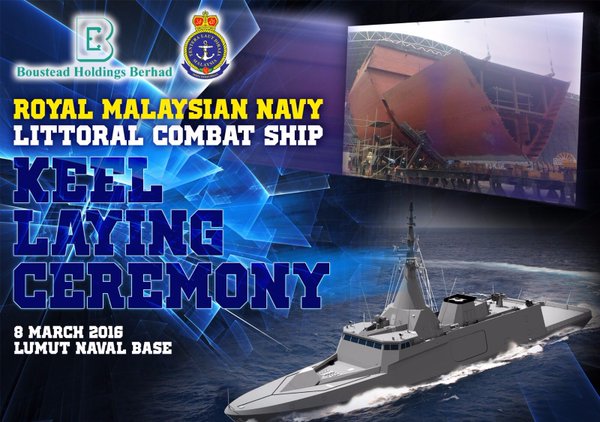
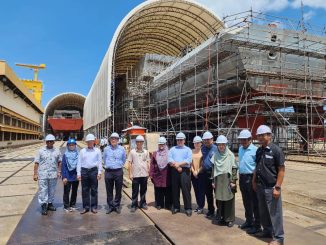
BTW recently around christmas last year there was a visit to Kuantan naval base by some Durjoy-based ship design build for Pakistan Maritime Security Agency (PMSA), PMSS Hinggol and Basol. It is armed with a single H/PJ17 30mm. The visit was also attended by the Sultanah of Pahang.
Reply
Yes, I forgot about those two ships.
We expected the guns to be ”Made in China” as cash is tight. The RMN will try to minimise as far as possible the amount of Chinese equipment and it remains to be seen where the CMS, radar and directors will be sourced from. If the CMS is Western; then we’ll have to approach the EOM [needed because of the source codes] for help to integrate the Chinese stuff and this will cost. If integration costs too much then there’ll be a major problem. If the CMS is Chinese but the radar Western then the same issue will arise. We can safely assume that the AC, distillation system, NBC [?] system and others will also be Chinese.
It’s good to hear the Chinese 30mm will be better than ”our old Bofors guns”. If it wasn’t then it would be a serious problem as the Bofors Mk1 was designed the late 1960’s …. :]
I dont see anything wrong with ‘Maritim Malaysia’ designation.
It is well established and unic to our coastguard as the word Malaysia itself is sufficient enough to let all those so-called ‘observers’ know about our ships and planes, what else the emblem, which added to the authoritative images.
Reply
That’s why I wrote untrained observers…
Was hoping for the Chinese made 30mm gattling gun to be installed..now that is what i call firepower
Why not use the same CMS as the one used for SGPV or our Meko’s? We can save on some aspect of the cost which i think the local talents are able to support. However, the license cost of the software and the integration of the Chinese weapons would need some man days to be budgeted for the integration.
Reply
Those CMS you mentioned are Western made, unlikely we will be given the right to install on a China made ship and integrate them with China-made systems.
Good to heard there is some progress about LMS…
DSME, Korea is launching 3k ton Thailand Frigrte… their program is come late after our Gowind but they get the ship much faster than us.
I can see the logic in this. Not everyone on a freighter or a trawler [especially those who don’t come into or near our waters often] will know what the APMM/MMEA acronym stands for or even what ”Maritim Malaysia” means ”notwithstanding the fact that ”Malaysia” is there. As Marhalim said : ”untrained observers”. Especially in areas near shared boundaries or disputed areas where the ship could just as easily be Singaporean, Thai, Indonesian or Filipino. Either way, when radio contact is made, everyone will know that the ship is Malaysian.
One thing I’ve noticed about the RTN is that they tend to order their ships in small batches, all different classes – 2 Naresuan class frigates, 4 Chao Praya frigate, 2 Pattani class OPVs, 2 Ratanakosin class corvettes and now a destroyer from Korea. All with minimal commonality.
Well if we save on the individual systems but spend more on integration, then it remains to be seen if we are really saving anything at all.
AM,
Precisely. That’s the point I’ve been stressing on. With guns and stuff like that it’s not so bad as they have a low footprint but if we buy missiles we’ll have not only integrate those missile to the director and CMS [assuming both are Western] but will also have to buy all the related test and support equipment – whatever savings gained by buying Chinese will be spent on integration costs.
Given that a Chinese hull and some of the needed internal stuff will be cheaper than Western equivalents; there will be cost savings but compromises will be needed. At the end of the day will the LMS provide a fraction of the capabilities we lost after the MM-38s, Aspides and Otomats were retired or will the capability gap be filled only when the LCS enters service?
Faisal,
Having the cash for integration is one issue. Another issue is the willingness of Western OEMs to provide the needed source/object codes for integration to done. Using a similar CMS on the LMS makes sense from a commonality viewpoint but stuff like Setis and COSYS is not cheap and this will drive the overall cost of the programme up.
Whatever it is and it may be I still don’t get it why our local shipyard(s) can’t build a number of simple vessels like this.
Reply
Because in the past they were content with O&G work, furthermore the government only selected a few shipyards to do government contract, so as to ensure that these yards become the champion of the industry.
First it was the MSE in Johor but then they decided to fund the Amin Shah run company PSC. Unlike Proton which sells consumer products as well as to the government, these shipyards dont get much funds from the commercial side so when government funds dried up, these yard become unprofitable. So there is no reason to specialise on building naval vessels, its better to build boats for smugglers. In the 80-90s some of our yards specialised in building boats used by smugglers in Hong Kong and Macau.
Its not a Malaysia phenomenon, its the same in Europe and worldwide, most of the shipyards that built naval ships are mostly government owned or reliant on orders from the government. Even Daewoo shipyard is facing bankruptcy due to the current economic uncertainties.
zainal,
In 2012 Daewoo was selected to build 4 tankers for the RN. This despite British yards being able to do the job. Sadly, yards with a long history such as Swan Hunter and Vosper are no longer in business.
@ Zainal Abidin
The main issue here is not the building phase. It is the design phase. Locally there is no big “pool” of experience in designing ships (unlike oil and gas platform design, which we have lots of local engineers in that line). Most of the ship design build in Malaysia are designed overseas, singapore, australian, new zealand and europe design houses. Even after a few “transfer of technology” our local naval designers are almost non-existant. That is needed before we can build our own ships.
We don’t need to design one from scratch. Existing hull design could be reverse engineered, good design details from varios ships be benchmarked, hull stability and machinery placements calculations be subcontracted to those with experience.
Ahh integration….
What is done with softwares 20 years ago is vastly different from that can be done now. That is all i can say. Unless you are integrating a complicated system like an AEGIS radar system to control and direct a russian long range anti aircraft missile, you won’t have a problem. There is now even a software that can seamlessly put all tracking/ranging data from radar, AIS, ESM, FLIR and put it on 1 single display, and can run on commercial C++ programming.
What are the intended roles for these ships, and which ships are they replacing? And as for missiles, are they intended, not intended or FBNW?
It is yet to be seen if any combat system is intended at all. After all, depending on what ships they replace (eg the MCMV) a combat system might not be installed on this variant at least.
… seems like you know a few things about integration.
As for local builders, it has been said repeatedly that few yards can survive on defence contracts if these are so sporadic and uncertain.
Reply
The LMS will mostly be for patrol, missiles were not intended.
“The LMS will be be mostly for patrol, missiles were not intended.”
The Chief’s interview did lead some of us to believe several missions will be handled by the LMS, and presumably not all missions strictly require a combat system. Of course, the ships have the potential to be much more networked if a combat system (compatible with the rest of the fleet) is installed.
Another thing is missiles for offensive roles may not be intended, but torpedos and self defence missiles or CIWS may we’ll be fitted.
Is the LMS a stealth ship? By the look of the design its look very stealthy.
Interestingly, the naresuan frigate of thai’s navy uses western weapons and electronics on a chinese made ship. The primary contractor was Saab. The weapons were american made.
But yeah our lms will use chinese made weapons although maybe we can use western electronics and cms. Which seems like a longshot since this case seems never to happened before.
Maybe the saab guys can help.
Reply
I believed the Naresuan was fitted with China made CMS and weapons originally. The Saab system and the ESSM are only fitted recently as part of its MLU
Can’t wait for March to see the unveiling of the model of the LMS. I believe it will be armed with 76mm and 2 H/Pj17 gun on the decks while the 2 20 ft container space provide lots of flexibility for different missions
LMS was never meant to be first-rate fighting vessels more like the “multipurpose platform’ with primary focus is patrol and secondary …….
RMN has indicated that the 20ft space available can be use for MCM, HUMANITARIAN, OCEANAGRAPHY, SURVEY or even ANTI-POLLUTION.
But what is to stop them to use the space available for SSM, ASW and SAM depending on the money to develop the weapon modules, interface and the CMS upgrade on the ships. Probably it is easier to fit the Chinese weapons if CMS is also Chinese.
The LMS will be better use in the water of the Straits and East Malaysia. and not for power projection in the Spratly’s.
You can take the STANFLEX as an example.
And with 3 kinds of 30mm guns coming soon, it will be interesting to see which the service prefers.
Zee,
A more accurate term is ”low observable” rather than the commonly used ”stealth”. The design of the LMS is typical of most naval ships nowadays – no right angles, an enclosed superstructure admidships and certain stuff covered by blinds. All these however just make a ship a smaller blip on the radar by reducing the RCS; the ship is still ”visible”.
Based on the picture of the new NGPC for APMM, the designation ‘Maritim Malaysia’ is still being used, but ‘Malaysia Coast Guard’ in smaller font size were added
Reply
Which picture?
Although it was not the best ASW missile but it still manage hit some big guy…
Reply
There are conflicting reports, if you are referring to the attack on the Saudi frigate. The rebels claimed it was hit by a China made missile and the ship was sinking. Saudi claimed that it was attacked by suicide boats, killing two crew although the damage on the ship was small. Which is the correct version? No idea!
It looks like the saudi frigate is attacked by suicide boats. This further reinforce the need to counter the current asymetrical threats from non-state actors.
My LMS plans (in the previous articles) are centered on fighting these threats by
– having 360˚ “staring” type Electro Optical (imagine this like a CCTV based radar) sensors that can automatically detect small incoming boats.
– 30mm remote controlled close-in weapon systems on each side of the ship, each covering 180˚ area.
– Longbow Hellfire or equivalent missiles, with milimetric wave radar guidance (not laser guided), with multiple simultaneous target capability.
– Last line of defence of 0.50caliber M2 machine guns.
For a frigate this size fail to counter an Antiship missile or 3 fast attack boat which much bigger n slower than an Antiship missile is a big failure…
Reply
Of the CO of course
In the case of Stark and Hanit; both weren’t on action stations and their Phalanx wasn’t even on standby mode, let alone switched on. For all we know, it could have been the same with the Saudi ship which if true is a major cockup given that missiles have been fired at other ships before in the area and that one [the ex-USN one operated by the UAW] was sunk. The best line of defence is to be on alert with all systems on – from the moment the EW detects a missile system’s acquisition radar, measures can be taken. In the case of suicide boats or a swarm attack the best form of defence is the same : early detection.
indonesia is getting 4 more kcr60 fac. the 4th will be ordered without weapons (to be installed later), 5th to 8th complete with weapons.
cost of the 4th ship is usd15mil, with the 5th to 8th costing usd50mil each.
“The best line of defence is to be on alert with all systems on – from the moment the EW detects a missile system’s acquisition radar, measures can be taken. In the case of suicide boats or a swarm attack the best form of defence is the same : early detection.”
We are also handicapped when it comes to early engagement. Besides the A guns and small arms on our ships, we are left with the 30mm cannon but these are manually aimed. I’m not sure what sights we have but newer systems will allow more reliable engagement at longer ranges, since distant targets are visually smaller and gun slewing adjustments have to be finer.
The MSI cannon on the LCS will be an improvement but I hope the capability can be retrofitted to other ships.
That said, not all suicide boats are detectable or show their intentions at long ranges.
the issue with swarm/small boats/suicide boats is that you would’t know their intentions until they are within the range of small arms fire. there is little way to do early engagement unless it is in a swarm with weapons clearly displayed. there is where the LRADs comes in, to warn any suspected boats to stop for inspection, or not to get near to the ship. warnings could be prerecorded in local languages where the ship is operating. the LRAD narrow localised beam means the message is directed to individual boats, unlike loudspeakers where the broadcast can be widely heard. if the boats ignores the warnings, then it is safe to engage them. early detection is best by electro optical devices (flir/vidar/360° staring eo systems etc), as operators then can visually see the boat, to look for any signs of weapons on board.
latest news
BNS on 17/3/2017 secured the LMS contract for RM1.17 billion (around USD260 million at current rates). The contract is for 4 ships, 2 to be built in China (2019/2020) and 2 more in Malaysia (2021)
The 30mms all have their own directors. On the Lekius they have dedicated Radamec directors.
The key to all situations is SA; early warning. That’s what the sensors and watches are there for. In a war zone or in times of tension; crews will be on heightened alert and there will be extra watches both on the bridge and on deck. Having 5 Hellfire mounts or 10 mini guns will account for nothing if the ship is not expecting an attack, i.e. the Stark and Hanit. Whether the swarm attack consists of people who are on a suicide mission or who intend to cause damage with an MRL or RPGs and then depart; also plays a part.
There are also rules of engagement : irrespective of not knowing intentions until within small arms range, rules of engagements call for warning shots, followed by shots aimed to disable or kill, if a ship/boat comes within ‘x’ nautical miles; as was the case with the RMN in the Gulf of Aden for which the main concern was RPG range. There PASKAL relied on Baretts for long range shots.
Unstabilized MRL on small boats- always wondered if these are used in direct or indirect fire mode. And what the hit probabilities are and how effective the warheads are.
AM,
That is something the IRGC/Pasdaran will be qualified to answer :] I guess it makes things easier if the target is a slow, undefended tanker.
Not sure if the LTTE’s Sea Tigers had MRLs on their boats.